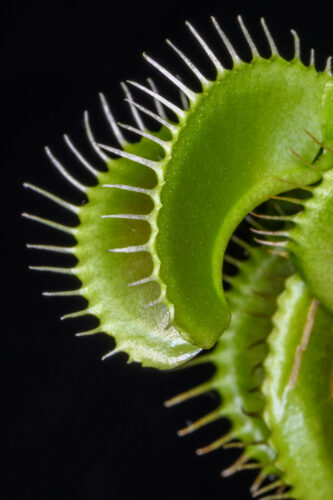Images courtesy of Flickr.
What if prosthetic limbs could act as true extensions of the human body? Not just metal machines, but rather, carbon-based devices that can interact with biological neural networks. With nearly thirty million people in need of prosthetics or orthotic devices, researchers are experimenting with new technologies that may allow for a new generation of prosthetic limbs that can drastically improve a person’s mobility, quality of life, and independence.
Traditional prosthetics use silicon-based technology with limited bio-compatibility, circuit complexity, and energy efficiency. While these devices can restore some mobility and function to a lost limb, silicon-based solutions are fundamentally incompatible with the natural processes of ion signaling found within the body. As such, to allow for effective brain-machine interfaces, the future of prosthetics will require the development of artificial devices that can successfully integrate into biological systems.
Simone Fabiano and colleagues at the University of Norrköping, Sweden, are exploring this proof of concept. By developing neuromorphic systems, which are brain-inspired machines that mimic neural processes, it may be possible to integrate artificial technologies with biological tissues. The Venus flytrap, a carnivorous plant with two leaflets that can snap shut, was an ideal specimen to test this novel technology. Not only could the activity of the flytrap’s ion channels be easily measured, but its closing motion also served as an obvious sign that the artificial signal went through. Using carbon-based artificial nerve cells, Fabiano and colleagues demonstrated that when a sufficiently high current was applied, Venus flytraps were able to respond to the electrical stimulus by snapping shut. These organic electrochemical transistors (OECTs) are modulated by gate-driven ionic doping and de-doping, closely resembling the ion-driven mechanics found in neural systems. In particular, Venus flytraps snap shut in response to the release of calcium ions in the cytosol. This enables the plant to react to the physical stimulation of its hairs by insects, allowing it to catch its food. By mimicking the neurochemical processes of the Venus flytraps, OECTs were able to provide electrical currents that could be received by organic electrical chemical neurons (OECNs) to trigger trap closure.
These experiments are not the first time researchers have been able to control the response of a Venus flytrap. In 2007, Alexander Volkov of Oakwood University was able to use an artificial electrical current to cause the leaflets of a Venus flytrap to snap shut. While the work of Simone Fabiano shares similarities with Volkov’s previous research, Fabiano’s new experiments differ in a few key ways. Importantly, Fabiano was the first to use carbon-based devices that resembled the structure of the actual neuron. By including an artificial synapse, or a tiny gap which ions jump across, the controlled reactions of the Venus flytrap in Fabiano’s research were more closely modeled off the true neurochemical mechanisms found in nature.
While closing a fly trap may still be a far cry from controlling a prosthetic limb with your thoughts, Fabiano and colleagues have demonstrated the possibility of interfacing OECNs with biological systems. Inducing the closure of a Venus flytrap may open the door to creating more complex brain-machine interfaces that can be applied to future prosthetic innovations.
Even now, prosthetics use has been associated with higher levels of employment, reduced phantom limb pain, and increased feelings of social acceptance. Still, it is common for patients with prosthetics to develop osteoarthritis or osteoporosis as a result of the inherent biomechanical disadvantage of current technologies. However, with the rising possibility of creating a seamless brain-machine interface that can mitigate the biomechanical drawbacks of traditional prosthetics, it is possible to invent a new generation of devices that can overcome the side effects of current prosthetics. Perhaps someday soon, the artificial nerves used to control a Venus flytrap will allow patients to have prosthetic limbs that are a true extension of themselves, controlled by their own neural networks.

